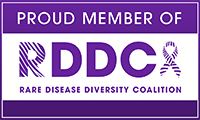Paul J. Utz, MD, PhD
Stanford University School of Medicine
Project Overview
Systemic sclerosis is challenging to study because it is rare and multifactorial. The conventional approach to medical study is to find a large number of subjects afflicted with a disease and to compare them to a large number of healthy controls. The hope is that, somehow, the average profile of patients and controls would balance each other out and reveal a disease-relevant signal. This approach has been applied to scleroderma with limited success because the small number of scleroderma patients and controls is often not sufficient to tease apart relevant disease-causing factors from inadvertent associations.
In this study, we are employing a new precision approach to understanding scleroderma pathogenesis. We are recruiting genetically identical twins where one twin has scleroderma and the other twin does not. Such “divergent twins” are uniquely informative because we have a perfect control for each patient—the same genes, same age, same household—the small differences we find between the twins will hopefully pinpoint disease-relevant differences. Our experience with a more common disease, asthma, in divergent twins shows that this is a uniquely powerful approach to identify disease-relevant mechanisms. We estimate that the number of subjects needed for this twin approach is far less (perhaps by 100-fold) than conventionally designed studies. Our study involves three key components: (i) careful evaluation of the clinical findings of each twin pair; (ii) a new ultra-sensitive technology called ATAC-seq to map the functional difference in gene control from the blood cells of the twin pairs; (iii) advanced bioinformatics methods to identify disease-relevant biomarkers and pathways.

